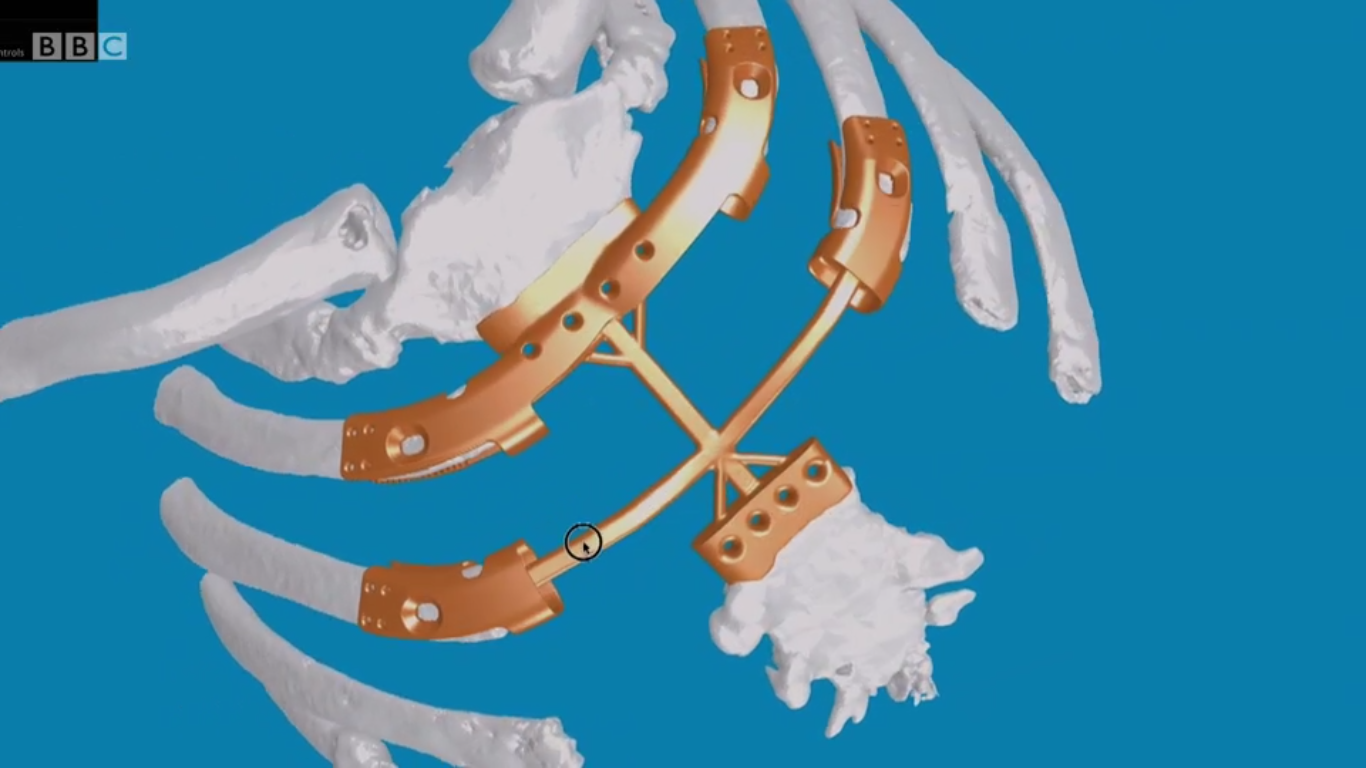A British man has successfully been fitted with a 3D printed titanium sternum in Birmingham, UK. While across the world, doctors in Hong Kong have 3D printed an ankle bone for the victim of a motorcycle accident.
The British patient, Edward Evans was treated at Heartlands Hospital in Birmingham. His story was covered recently in a TV series aired by the BBC entitled ‘Trust Me, I’m a doctor’. Edward lost his sternum as a result of an infection that was eating away at the bone. In order to restore the bone without causing another infection, doctors turned to an alternative method.
The hospital used a 3D printed titanium implant, a procedure only carried out once before. The metal implant was 3D printed by Australian’s Anatomics and CSIRO. The two were similarly involved in the first procedure of this kind two years ago.
Both this case and the treatment in Hong Kong, showcase the application of 3D printing to create high-quality functioning parts. These real world cases also illustrate vividly how 3D printing can be used to improve the lives of patients. This is also evident in the case of engineer Tal Golesworthy who used 3D printing to mend his own heart.

3D printing the sternum
In order to surgically implant Evans with a new sternum, the British hospital got in touch with Australian company Anatomics. The medical device company were already familiar with 3D printing a structure of this kind. As before, they used a 3D printing machine housed at CSIRO. CSIRO are an Australian government research institution, who launched their $6 million 3D printing facility in 2015. The machine used to create the titanium device, shown in the BBC programme, was an Arcam Model A1 EBM System.
The Arcam A1 was first introduced in 2009 and uses Arcam’s patented EBM Multibeam technology.
Heartlands Hospital in Birmingham sent CT scans of Edward’s chest across the world to Anatomics in Melbourne, Australia. Once 3D printed, the structure was cleaned and then coated in a porous substance, polyethylene, in order to help bond the part with Evans’ bone. Once they had successfully manufactured the part, it was shipped to the UK.

Traditional procedure
The conventional process for a procedure of this type would involve a cement block hand crafted and formed with a mesh. However, this process is not as accurate and would be more prone to infection. The risk of infection was significant in this case. Evans has made a full recovery following the procedure and tests have shown that his chest now functions better.
The Cardiothoracic surgeon, Mr Ehab Bishay who performed the surgery, explained why they opted against cement,
Although cement is tried and tested we believe that custom built 3D printed titanium implants may have certain advantages which we are looking to show. Titanium is more resistant to infection, lightweight, tough, and since it exactly replicates the defect, it means that the operative time is reduced as it slots in. It should also offer a better cosmetic result.

3D printed ankle
In Hong Kong, 3D printing was used to restore the patient’s ankle functionality. Doctors at Pamela Youde Nethersole Eastern Hospital used 3D printing to create a new talus bone which was lost due to a motorcycle accident. The talus connects the leg bone to the foot, and without the 3D printed bone they would have had to join the leg and foot together directly. This would have greatly reduced the patient’s mobility. Doctors scanned the patient’s foot and then were able to create a metal 3D printed equivalent of the talus.
You can receive all the latest 3D printing news, and let us know your thoughts on the use of 3D printing in healthcare by following us on our social media channels.
Sign up to our newsletter to stay up to date with new innovative use of 3D printing.
Featured images shows Surgeon Gabriel Weston with a prototype of Evan’s rib-cage. Photo via BBC.



